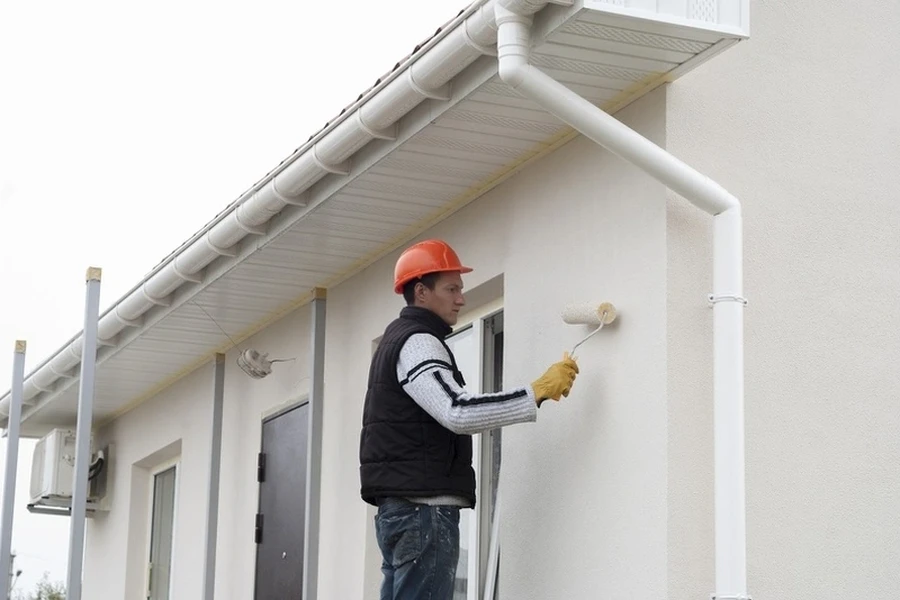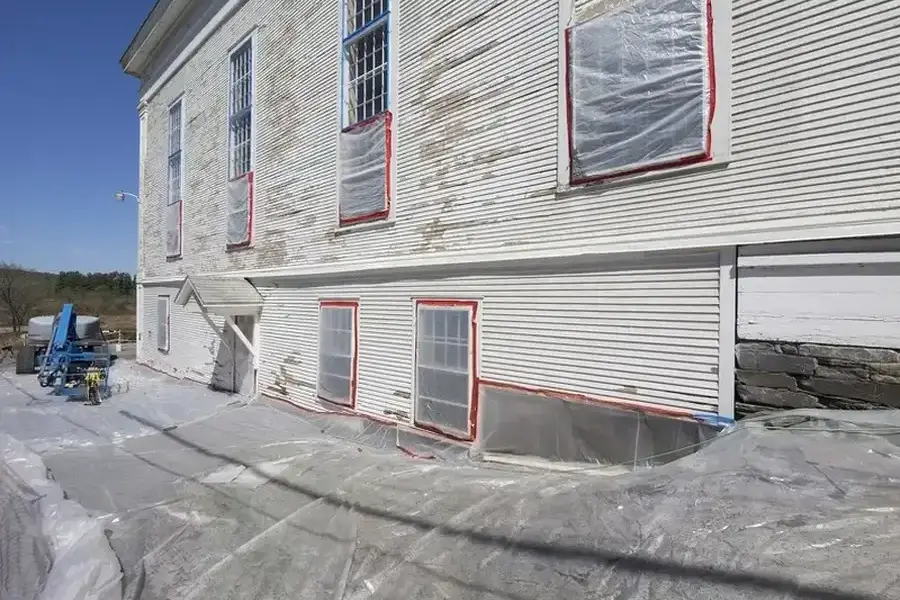The Protective Shield for Brick and Stone Structures
Masonry surfaces, such as brick and stone, add timeless appeal to any building. However, these materials face challenges from weather and pollution. Moisture can seep into the tiniest cracks, causing damage over time. Furthermore, extreme temperatures can lead to expansion and contraction, which might result in cracking. Therefore, protecting masonry is crucial for maintaining its beauty and structural integrity. This article explores how a fresh coat of paint acts as a barrier against these elements, offering long-lasting protection.

Why Paint Matters for Masonry Protection
Using high-quality paint on masonry provides more than just aesthetic value. The right paint creates a waterproof barrier that prevents water from penetrating the surface. Additionally, this layer helps reflect UV rays, reducing heat absorption. By doing so, it minimizes thermal stress on the material. Consequently, your masonry structure remains sturdy and maintains its appearance longer.
Benefits of Using Specialized Coatings
Selecting the appropriate type of paint is essential for effective protection. Not all paints are suitable for masonry surfaces. Specialized exterior painting products offer benefits beyond regular paint. They contain additives that enhance adhesion to rough surfaces and provide flexibility to withstand temperature changes. Moreover, these coatings come with mildew resistance features, preventing unsightly growths.

Common Threats to Masonry Surfaces
Masonry surfaces face numerous threats that can deteriorate them quickly. Water is a primary enemy, leading to efflorescence and staining. Freeze-thaw cycles cause cracks when trapped moisture expands upon freezing. Pollution also contributes by depositing harmful chemicals that erode the surface over time. Addressing these concerns through exterior painting can shield your masonry from harm.
Steps to Prepare Masonry for Painting
- Clean the surface thoroughly to remove dirt and loose particles.
- Repair any cracks or damaged areas using suitable fillers.
- Apply a primer designed for masonry surfaces to ensure better paint adherence.
- Use quality paint specifically formulated for external use on masonry.
- Allow each coat of paint to dry fully before applying additional layers.
Expert Recommendations for Long-Lasting Results
Experts suggest regular maintenance to preserve painted masonry surfaces. Repainting every 5-7 years keeps the protective layer intact. Choosing breathable paints is crucial, allowing moisture to escape without causing blistering or peeling. Furthermore, inspect your masonry periodically for signs of wear or damage. Early intervention ensures minor issues don’t escalate into costly repairs.
Cost Considerations and Value Proposition
The initial investment in painting may seem significant but consider the long-term savings. Protecting masonry reduces repair costs caused by water damage and structural issues. Moreover, well-maintained exteriors boost property value and curb appeal. Over time, the return on investment becomes evident through lower maintenance expenses and enhanced marketability.
Taking Action: Your Next Steps
For those looking to safeguard their masonry surfaces effectively, professional services are recommended. Located in Maynard, MA, we provide expert solutions tailored to your needs. At LID, our team specializes in delivering results that stand the test of time. Don’t wait until damage becomes visible; contact us today at (508) 979-9147 to start protecting your investment.